ORTHODONTICS
INTRODUCTION
To start the treatment, orthodontist needs some data to analyze the problems. On the first visit, orthodontist will collect the data which are study model, x-ray (panoramic and lateral cephalometric radiograph) and facial photo. After orthodontist analyzed the problem then on the next visit, the dentist will insert the braces.
WHEN TO VISIT AN ORTHODONTIST
It is recommended that all children have a check-up with an orthodontist by the 7th year of age, for early detection of any potential problems. The child’s teeth may appear straight to the eyes of the parents, but there could still be a problem that only an orthodontist can detect.
By the age 7, some of the permanent teeth have erupted, so that most children have a mix of adult and baby teeth. At this stage of mixed dentition, an orthodontist can spot potential orthodontic problems related to jaw growth and eruption of adult teeth. Some growth-related orthodontic problems are easier to correct when they are identified early, while the facial bones are still growing.
When a problem is detected, the orthodontist may not always recommend immediate treatment. In most of the cases parents are advised to bring the child every 6 months for periodic monitoring of the jaw growth and dental development.
Although only a few orthodontic problems need to be corrected at the age of 7, it is considered as an ideal time to evaluate a child’s condition and determine if orthodontic treatment is or will be needed. In case of existing or potential malocclusion problems, an early orthodontic screening allows the orthodontist to offer advice and guidance for the best age to start treatment and what kind of treatment will be appropriate.
TYPES OF ORTHODONTIC TREATMENT
For childrenWhenever a jaw discrepancy exists, the ideal solution is to correct it by modifying the child’s facial growth. There are so many orthodontic appliances for growth modification for skeletal problem, which are expander (appliance for expand narrow arch), twinblock (this appliance is retained on the teeth with conventional clasp (but can be cemented in clasp). The complimentary inclines on the upper and lower portions are relatively steep, forcing the mandible to advance in order to close), etc.
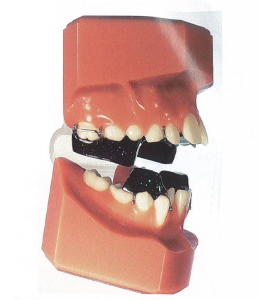
- Labial Braces:
-
Metal Braces
This braces is widely used by patients especially teenager and patient who do not care about looks or aesthetic. Almost all the cases can be treated by this braces. Metal braces is cheaper than other braces and very strong.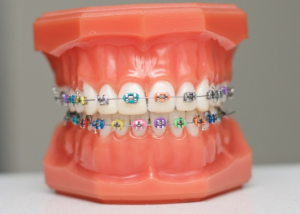
-
Porcelain/ Ceramic Braces
Ceramic braces work like metal braces. Only better, because they blend in with your teeth for a great look. They are a perfect combination of strength and beauty.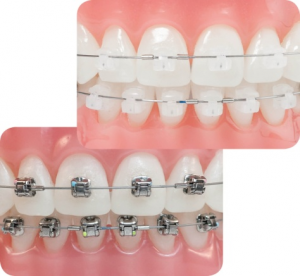
-
Self / Passive Ligating Braces
This means that the brackets themselves hold the wire in place without the need for elastics or metal ties. This type of braces move freely, quickly and comfortably because of less friction and pressure, and are designed to becomfortable and easy to clean. Without the elasticties which tend to attract and collect plaque, it is easier for you to brush and keep your teeth clean. There are 2 types of self ligating braces which made from metal and porcelain.. -
Lingual Braces
Lingual braces are an advanced generation of custom made braces that are hidden on the back of the teeth. These lingual braces are 100% customized and perfect for those patients who like to go about their normal routines without feeling self-conscious about their braces. Lingual braces are completely invisible so you can confidently smile without having to worry about the way your braces look.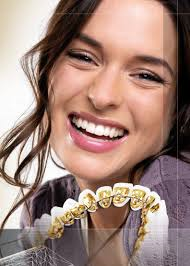
-
Invisalign
Invisalign is a clear alternative to traditional braces. It makes use of virtually invisible and removable teeth aligners tailored for you to straighten your teeth, without the pain and inconvenience of wires and brackets, but still limitation cases which can use Invisalign.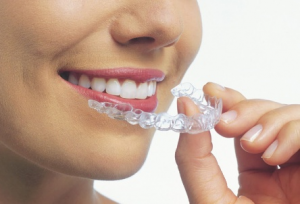
Impacted canines are a relatively common finding in dental practice. For patients with impacted teeth, several treatment options are available. After clinical and radiographic analyses, patients and parents can be presented with the advantages and disadvantages of three options:
-
No treatment
If a patient decide to have neither surgical nor orthodontic treatment, the dentist should monitor the impacted tooth by radiographic examination, looking for the development of pathologic changes such as root resorption of adjacent teeth. The patient is informed of all associated risks, including the poor prognosis for long-term retention of the short-rooted primary canines.
-
Extraction of the impacted tooth
Once it is extracted the tooth can be replaced with an implant or a fixed partial denture. Another solution is to move the distal teeth forward, replacing the missing canine with the first premolar.
-
Extraction of the impacted toCombined surgical and orthodontic treatmentoth
This is the most satisfactory option. With a combined surgical and orthodontic approach and impacted tooth can be brought to the ideal position, therefore achieving esthetic and function.
